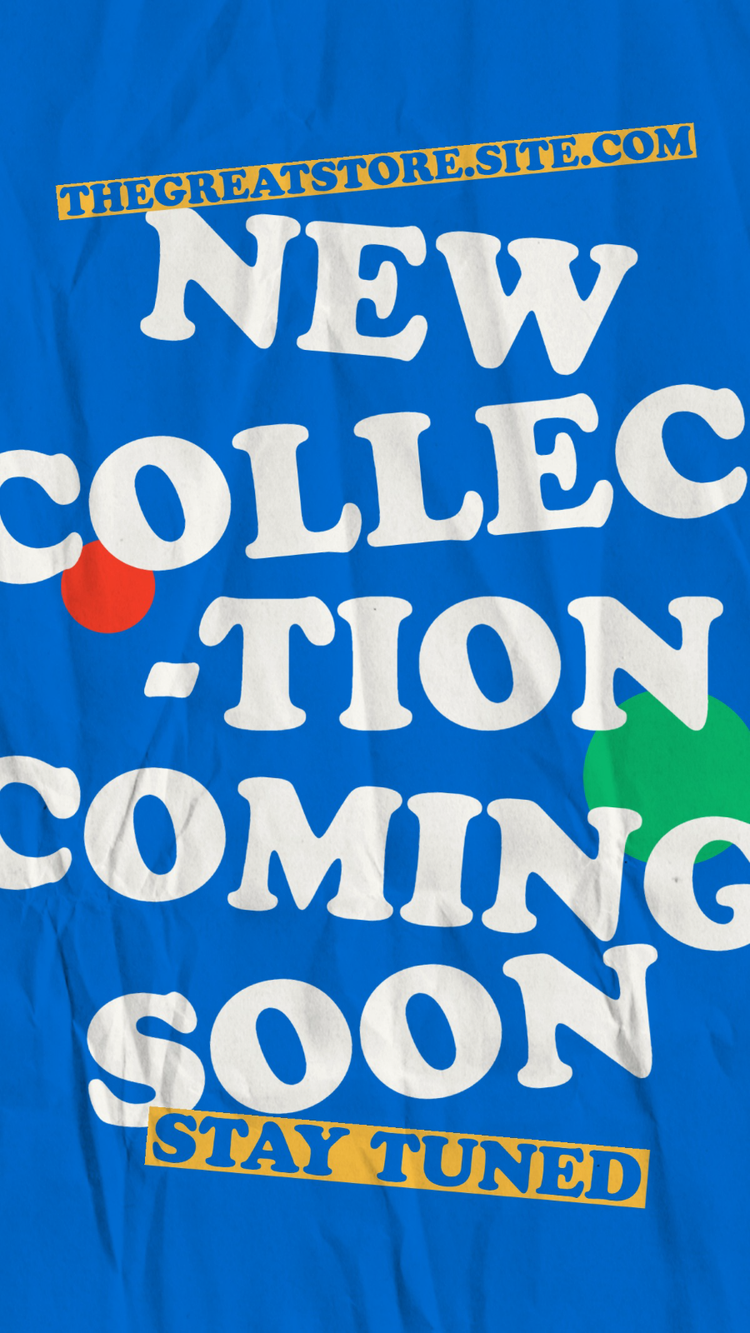How to Start an Online Business in 2023

If you’re looking to start an online business in 2023, you aren’t alone. Online businesses are an increasingly popular choice for budding entrepreneurs and are more accessible as a career path than ever before.
With the right tools and resources, anyone can launch their own successful internet venture. If you’re taking the plunge and starting something new, growing your side hustle, or doing the groundwork to actualize your dream, this beginner’s guide can get you and your new business up and running in no time.
Summary/Overview
Decide what problem your online business will solve.
Your first step is to decide what problem your online business will solve.
Is there an audience that would benefit from your product? Is the market begging for the idea, innovation, or product that you’re ready to bring to the world? Asking these types of questions determines your position in the competitive ecommerce landscape, as well as how you go about marketing your online business.
Be sure to research potential problems that your prospective audience or customers will have, as well as any available answers or solutions to these problems — this ensures your online business offers something distinct and helpful. Set yourself and your brand apart from competing businesses and ventures to cut through the noise of a busy online marketing, and customers will develop a familiarity and trust in your online business.
Define your online business model.
Choose your business model carefully. Consider several factors, including the products or services being sold, target customer base, and expected revenue.
Depending on the type of venture, there are several different types of business models to choose from, which include affiliate marketing models, ecommerce models, and services.
What will you sell?
Before settling on a business model, decide whether you will produce your products or services, or outsource production to third-party suppliers.
Producing goods and services on your own gives you control over quality, price, and turnaround times, while outsourcing can provide cost savings and access to expertise that you may not be able to otherwise achieve on your own.
Look for products or services needed in daily life.
We are constantly looking for ways to make life more convenient and efficient, always seeking ways to save time and maximize productivity. There is a growing demand for solutions that simplify everyday tasks, from booking travel to clocking into work. Your online business should seek to create a value proposition that customers will understand as an improvement to their life.
To start, consider what occurs in your own life that a product or service could make a little easier. Maybe you would benefit from a service that reduces the time spent on a particular mundane task. Ideas like scheduled meal delivery and virtual assistants help people save time and energy.
Knowing what people are looking for can help you identify their needs and provides insights into how to market to them. You can use surveys, focus groups, or even one-on-one interviews to gather data and feedback from potential customers that will help you shape your idea and your brand profile.
With your online business idea in-hand, find out if your product or service would actually solve the identified problem. Do this by conducting surveys and interviews with potential customers, as well as networking within the community — and don't forget your personal connections! Asking family, friends, and neighbors for their input can be very enlightening.
Determine actual market need.
Just because you think you have a great concept doesn't mean there will be people willing to pay for it. With that in mind, narrow your ideas down to the two or three that are most promising.
Next, weigh the feasibility of each solution. Consider the actual market need for your ideas, and analyze the costs involved to determine which one will be most profitable in the long run.
Research your market niche and competition. The SEO-based skill of keyword research can be a critical tool in this process, as it allows you to identify what keywords are being used by competitors and how much competition there is for each keyword.
Use online tools to analyze the keywords that your competitors are targeting and determine how they are positioning themselves in the marketplace. View this information in terms of what you need to do to stand out.
Examine the strengths and weaknesses of your competitors to perfect your business angle. Identify areas where you can differentiate yourself and build a unique identity in the marketplace. Notice what is working for your future competitors to develop your own strategies for success.
Look at pricing models, customer service offerings, product features, and any other advantages your competition may have over you. From there, spot their weaknesses, make improvements, and provide a better solution for customers.
Today's market requires you to remain agile and alert to changes that could affect the success of your venture. Technology constantly advances and customer demands steadily evolve, so it's crucial to stay up to date on the latest trends and adjust your product or service accordingly.
The introduction of new technologies, like artificial intelligence (AI) for instance, could drastically change the way you do business. To stay competitive, keep informed about these kinds of advancements and how they could affect your online business. Your company remains relevant and successful by allowing the latest and greatest trends and tech to shape growth.
Who is your customer?
There are several places where you can find your online customers. You can sell your products or services to customers, businesses, or other companies through sites like eBay and Craigslist.
Selling B2B (Business to Business), B2C (Business to Consumer), or C2C (Consumer to Consumer) through these platforms is a great way to reach a wider audience and increase revenue. In addition to these sites, you can also create your own online store by using an ecommerce platform like Shopify or WooCommerce.
Business to Business is a type of model in which companies sell products or services to other businesses. B2B transactions can take place between two large companies, two small businesses, or a small business and a larger company.
A key advantage of this model is that it reduces overhead expenses by allowing you to order larger volumes of products or services at a discounted rate. You also have more potential for larger sales, and for recurring revenue.
B2B is an excellent choice if you have already established relationships with businesses, and if you have experience working in the corporate world.
D2C (Direct to Consumer) is a business model in which companies sell their products directly to customers. This type of model allows businesses to control their entire production and sales processes from start to finish and eliminates the need for third-party wholesalers or retailers.
This model is particularly beneficial if you offer unique products, as it allows you to capture more of your customers' spending power. By cutting out the middleman, you can save on overhead costs associated with inventory storage, packaging, and shipping.
C2C (Consumer to Consumer) is a type of business model in which consumers sell products or services directly to other consumers, without the need for a middleman.
C2C transactions are typically characterized by low overhead costs, as you do not need to invest in inventory or packaging. This type of business model is increasingly popular due to platforms like Craigslist, which allows users to buy and sell items with ease.
Affiliate marketing.
Affiliate marketing occurs when a business pays you to promote their product or service — which is an excellent choice if you want to sell products or services already on the market, and if you already have a solid customer base. This model allows the business to monetize its existing customer base, as well as tap into new markets and expand their reach. For example, Amazon has a robust affiliate marketing program.
Unlike traditional online advertising methods — where businesses must pay for each click or view — with affiliate programs, businesses only pay when a sale is made. In other words, you earn a commission each time someone buys the product or service you’re promoting.
If you have a product ready, turn the arrangement around and partner with an influencer. This arrangement is a cost-effective way for you to market your products and services, since an influencer would be promoting on their behalf.
Influencers work to build credibility with their fan base. When they have a large audience who trusts their opinions, their product recommendations can significantly impact sales. By partnering with influential figures in your niche, you can increase conversions and drive sales for your business.
Affiliate marketing is a low-risk, low-cost way to get started as an online entrepreneur. Whether you’re the company selling the product or the person doing the promoting, this type of business model requires minimal overhead expenses and can be quickly set up with few startup costs.
Ecommerce.
Ecommerce can take on both physical and digital forms. Before you can determine if this is the right approach for you, you must weigh the advantages and disadvantages of both types of products.
Physical products, such as clothing or furniture, require more time and resources for storage, shipping, and tracking orders. Digital products, such as software or eBooks, can be delivered quickly and easily without any overhead costs.
Examine the business models available for selling ecommerce products. Depending on the type of product you are selling and your intended customer base, one of these models may be more suited for your online business than others.
Retail is a popular ecommerce model for selling physical products. This involves purchasing items from a wholesaler or manufacturer and then reselling them to customers.
Retailers are able to control their inventory and pricing while also taking advantage of discounts offered by suppliers. This type of business requires you to make a significant upfront investment. You also need to establish efficient systems for order fulfillment, customer service, and product returns.
Wholesale ecommerce offers advantages for both buyers and sellers. For buyers, wholesale models provide access to a wide variety of products at much lower prices than retail stores. This allows customers to purchase goods in bulk or in larger quantities at discounted prices, thus saving them money. Plus, it provides convenience for shoppers who do not have the time or resources to visit a retail store.
As an ecommerce seller, wholesale models offer you an opportunity to purchase goods in bulk at discounted prices and then resell them for a higher price. This allows you to maximize profits while still providing customers with competitively priced merchandise. If you run your business entirely online, another benefit is that this type of model requires minimal overhead costs as there is no need for storage or shipping.
Dropshipping is a great business model for ecommerce entrepreneurs who want to start their own online store without the overhead costs of inventory, packaging, and shipping.
In this model, you can partner with a wholesaler or manufacturer that will store, package, and ship products directly to customers on the business’s behalf. This allows you to focus your resources on marketing and promotion, as well as customer service. Running a dropshipping business also allows you to quickly respond to changing customer needs by easily offering new products.
If you opt to own your own inventory instead of dropshipping, consider the cost of shipping and packaging the items. Also note the cost of storage space for your products. This can be significant if you sell large or bulky items and may require an additional rental fee. Furthermore, storing goods in a warehouse or other storage facility incurs other expenses, such as insurance and security costs.
Freelance or Contractor Services.
When launching a new service-based online business, one of the most important considerations is how you will present your service to customers. They will make their determination by outcomes, rather than relying solely on experience or credentials.
Preferring to see tangible results demonstrating the quality of the service, this shift in preference means that you must be willing to invest in a robust online presence and marketing strategy. Among other things, this includes a well-crafted website with quality content, such as a portfolio and customer testimonials.
Customers will also consider the price of the service you provide. While quality and credentials are important indicators of value, customers also want to be sure that they are getting the best deal for their money. This means that you must not only offer competitive rates, but also provide a clear breakdown of what is included in the service so customers can make an informed decision.
You might be wondering where these customers would come from. Finding freelance customers through your network, freelancer communities, freelance marketplaces, and social networks is an indispensable part of launching a successful service-based online business. Consider using a freelancing marketplace, such as Upwork, to find new customers. By leveraging these resources, you can quickly reach potential customers.
Software as a Service (Saas).
Are you digitally-savvy? Consider Software as a Service (SaaS) among your online business model options.
SaaS products provide customers with access to applications and services over the internet, eliminating the need to install software or maintain in-person IT infrastructure. This type of model allows you to offer customers high-quality services and products with low upfront costs.
Unlike traditional software products that require the user to install a program on their machine, SaaS products are completely hosted in the cloud. In addition, SaaS products can be quickly and easily updated without the user taking additional steps. This drastically reduces your maintenance costs yet provides a seamless experience for your customers.
To be competitive, consider pricing models carefully. Many SaaS products offer customers subscription-based access, allowing them to pay for only the services they need. This type of model allows you to quickly scale your product(s) and reach new markets without investing in the development of additional features or functionality.
Before launching SaaS products, you must be absolutely certain that your product is secure, reliable, and user-friendly. This means your product must be scaled to meet customer demands, and new features must be well-tested before being released. You must also offer value-added services — like customer support, data backups, and technical assistance — in order to remain competitive.
To thrive in the realm of SaaS, networking is a must. Let strong connections guide your strategy and approach. Build meaningful collaborations with partners and remember that word-of-mouth is often the best source of advertising.
Finally, one of the best strategies for success in software as a service (SaaS) is to focus on a particular industry or product type. This means that online businesses should look to identify their target audience and develop products that meet their needs. Focusing on a niche within an industry can help you better understand your customer base and create more successful products.
Information products.
Selling digital products such as eBooks, worksheets, templates, and online courses is a great way for you to start an online business. They require no inventory or shipping costs, and can be delivered quickly and easily, allowing you to tap into new markets and reach customers all over the world.
If you have particular expertise, selling digital products is the perfect way to monetize your knowledge. Customers can buy online courses on their topic of choice, creating a passive income stream.
An online learning program can be broken into various levels, starting with an entry-level course, for example. Entry-level courses are typically priced around $500, making them accessible to a wide range of consumers while still providing you with a good ROI (return on investment).
In addition to offering entry-level courses, you could design and market simple learning tools, like PDF worksheets (which can be edited with help from Adobe Acrobat), alongside more advanced products, like higher level courses, in-depth workshops, eBooks, books, or educational retreats.
Retreats can be a particularly lucrative option. Usually priced around $2,000, this option gives you an even greater ROI. This way you can tap into a larger market and reach more customers interested in your services. Retreat-style offerings often yield higher rates of customer retention, too, thanks to the depth and quality of providing more advanced products.
As time goes by, modify your price points in order to match changing market demands. Adjusting prices in accordance with current trends ensures your product remains competitive and attractive to potential customers. Adjusting pricing also helps ensure that you are making a profit while still offering a fair value for your services or products.
Optimizing your products or services.
Unlike traditional brick-and-mortar businesses where a passerby may simply walk in and buy an item, online businesses need to find unique ways to market themselves and gain exposure. Podcasts, partnerships, and social media are all effective marketing strategies for online businesses. These options can expand outreach, bring opportunities for added monetizing, and boost sales.
Podcasting is a great way for you to reach a large audience in an engaging and cost-effective manner, sharing your stories and advice while connecting with like-minded individuals. Plus, podcasting can be done from the comfort of your own home, reaching potential customers with minimal cost or effort.
Partnerships are becoming increasingly popular among online businesses as a way to reach more customers, increase brand awareness, and drive sales. Partnerships create mutually beneficial relationships, expanding your customer base and growing your business. Partnerships also provide you with access to resources and expertise that you may not have in-house.
Social media marketing is a must. Platforms like Facebook and Instagram offer powerful targeting tools that allow you to reach potential customers quickly and cost-effectively. It's also common to use email newsletters as a way to connect with your customer base and promote new products or services.
Even though social media is comfortable and familiar to most users these days, staying engaged can be overwhelming. Thankfully, you can lean into marketing products like Adobe Campaign to facilitate cross-channel communications. This way, you stay productive and still provide top-notch customer communication.
Selling both digital products and freelance services that complement each other is a great way to create multiple income streams. You can offer them both directly to customers without having to invest in inventory or shipping costs.
Working arrangements.
When someone hires you for online products or services, you will probably find yourself outside of traditional HR hiring procedures. Online services are often more flexible and less structured than traditional companies, which allows both the buyer and seller to be creative and take advantage of unique opportunities. For example, freelancers can typically choose their own hours, clients, and projects, while dropshippers can quickly test new products and stock different items as needed.
Starting an online business can provide you with the freedom to create your own business structure and pursue your goals without the same rules and regulations that govern traditional businesses. However, you also don't receive the same benefits such as health insurance, pension plans, and paid holidays. And because you have more flexibility with your pricing models and are not bound by the same labor laws, you might find a lack of job security and a risk of lower pay due to competition or market fluctuations.
Develop your web presence.
For a realistic chance of success in today’s marketplace, a robust web presence is a must. Although you can start small and sell through third party sites such as Etsy or Shopify, eventually you will want to spend time creating a website to really become a successful online business. Leverage the power of the internet to rapidly reach new markets and expand your customer base.
Having a strong website and social media presence allows you to showcase your services, products, and values in order to attract potential customers. A well-developed web presence also allows you to grow your network of contacts and build relationships with other industry professionals.
Create a website for your online business.
A robust web presence starts with your own website. Build a professional, high-quality website that highlights your products or services, displays your business name, helps customers connect, and explains why they should choose you over the competition.
There is a variety of website builders available, so weigh the pros and cons of each option in order to determine which one will best suit your needs. Website builders typically offer a variety of features such as drag-and-drop design, custom templates, and mobile-friendly designs that make web development a bit more accessible. Many website builders include web hosting services and other marketing tools that can help you acquire a domain name and maintain your online business.
When deciding what to include on your website, consider what type of content marketing will be most beneficial to your potential customers. Content can range from informative blog posts and videos to in-depth whitepapers and eBooks.
Consider what sort of services you offer and how best to present them on your website. Show customers examples of your work and provide detailed descriptions of your processes.
If you are an ecommerce business and want to sell online, make sure to choose a format that easily displays all of your available products. Integrate a platform into your ecommerce website that allows customers to buy directly from your online store with debit or credit cards. Make sure your ecommerce store is aligned with your business plan.
Customers visiting your website should easily understand what problem you will solve for them. Thoroughly describe the services and products you offer to help customers make their decision.
Similarly shape your business's web presence with quality content. With high-quality, relevant information, you can quickly build a loyal following and establish yourself as an industry expert. Engaging content helps website visitors find the solutions they are looking for, increasing the likelihood of them becoming paying customers.
Building an email list is a great way for you to connect with prospective customers and generate leads for your business. An effective email list provides an ongoing source of well-qualified leads interested in the products or services you offer. Also, a large email list allows you to tap into new markets and build relationships with potential customers. To build an email list, make compelling content that includes CTAs inviting people to sign up for your emails.
Post your content on your website and promote it through social media channels such as Twitter and Facebook. Make sure to link to your various social media sites and apps from your website so your customers know where to find you. Utilizing SEO (search engine optimization) tactics such as keyword research also ensures your content reaches the right audience and increases the chances of gaining more subscribers. Through SEO research and best practices, you can optimize your social and online marketing tactics to reach new potential customers in an organic way.
Use social media accounts.
Optimizing social media is your next step. To begin, determine which platforms you will use to reach potential customers. Many entrepreneurs engage in digital marketing on popular social media networks like Facebook, Twitter, Instagram, TikTok, and LinkedIn.
With these platforms, you can promote your services, products, and brand to attract potential customers. Additionally, you can use Adobe Express to make unique posts on platforms like Instagram (don't forget your Instagram highlight cover) and Facebook to keep followers updated on new offerings.
Social media is also a fantastic place to advertise, offering a wide reach and assistance in collecting important customer data as users explore your ads. Social media ads can target the right audience for customer conversion.
Posting valuable content is a key factor in building your business' social media presence. The content you post should be relevant to your industry and product offering, as well as engaging and informative. This could be an educational graphic posted on Facebook, an entertaining TikTok video, or a creative Instagram story — all made with the help of Adobe Express.
Engaging with and responding to your audience on social media is a must. This way, you make a positive impression and build customer relationships. Stay active on social media and interact with customers to create an environment of trust and loyalty, which will ultimately lead to more repeat customers, as consumers appreciate feeling heard and valued.
Similarly, make it a point to respond quickly to customer inquiries. Customers view quick responses as a sign of professionalism and reliability, making a positive impression on both existing and potential customers. Responding quickly also demonstrates that you value your customers and are committed to providing them with the best level of service.
Hone in on your target market.
Narrowing down your target market is indispensable. Focus on a specific group of people to ensure that your marketing efforts are tailored to their needs and interests. This maximizes your marketing campaign ROI to effectively reach those individuals who are most likely to purchase your product or service.
Research your target customers, determine their interests and behaviors, and analyze current market trends to create a successful marketing strategy that resonates with the people you’d like to reach.
Identify your ideal customer.
Once you identify your target market, further analyze and understand which segments are most valuable for your online business. Factors such as purchase history, customer lifetime value, and customer loyalty can help you understand which segments are most meaningful to focus on. By understanding your ideal customers, you can create marketing strategies that cater to their needs.
Native audience insight tools on social media platforms are an incredibly powerful way to get a deep understanding of your target customers. Leverage these tools to gain access to detailed data about your followers and gain invaluable insights into their interests, behaviors, and purchase habits — then craft strategies that reach the right people with the right message.
You can use online surveys or email survey campaigns to gain a better understanding of your target customers’ interests, behaviors, and desires. These surveys can include questions on topics such as demographics, lifestyle choices, purchasing habits, and interests. Such data can then be used to improve customer segmentation and marketing strategies.
Demographics can be useful indicators for potential customers. For example, if your business targets a younger audience, focus on marketing strategies that are tailored toward those in the 18-35 age range. If you are targeting a specific field, like technology or fashion, focus on interviewing key players in relevant industries. You can also leverage customer interviews to learn about the needs and wants of your target market and generate marketing strategies based on these insights.
When it comes to understanding the interests of your audience segments, research is key. The data you gather can provide important information about customer interests and behaviors, which you can then use to shape content, campaigns, and other marketing strategies.
Conduct a product trial.
Trials are a great way for you to gauge how your target customers are going to respond to your product. By giving potential customers the opportunity to test a product before making an investment, you can gain vital feedback on the user experience to inform improvements and strategies.
Informing your audience is the first step towards a successful product trial. To reach the widest possible audience, you should consider utilizing multiple channels to promote the trial, including your website, pay-per-click (PPC) ads, and social media platforms.
Add a designated page to your website containing information about the product trial. This page should give potential customers an understanding of the offering and answer any questions they may have. Also, provide contact forms so that customers can easily get in touch with any queries that arise.
In addition to your website, consider utilizing PPC (pay-per-click) ads and social media platforms to promote the product trial. PPC ads are a great way to target potential customers based on their interests and behaviors, helping businesses reach individuals who may be interested in their offering.
Several things will help you determine the duration of a product trial. Cost is a key factor, as longer trials can be more expensive to execute. Also weigh how much data you need to collect. Technology products, for instance, tend to require longer trials than non-tech products to form a comprehensive understanding of the user’s experience. Finally, consider how long it takes for customers to form opinions about the product or service.
Communicate the parameters and expectations of the trial with participants. This communication should be clear and concise so that they know what to expect from the trial. Also, provide ample resources and support throughout the process so that participants easily understand any changes or updates to the trial.
For meaningful insights, engage with participants throughout the trial. Establish a clear business plan to connect with participants. This helps ensure that they stay engaged and provide feedback.
You can use an array of methods to keep customers involved, like regular emails and conducting customer interviews. Offer incentives like discounts or free products in return for feedback and participation in the trial.
You may find that participants are slow to engage or provide feedback about their experience. If this is the case, extend the trial period. This gives participants more time to become familiar with the product and provides helpful thoughts and ideas. Plus, it gives you more time to improve your products and services before releasing them to the public.
Following up with participants after a product trial is another essential step in the process. After gathering feedback from customers, take the time to thank them for their participation and let them know that their opinions were heard and considered.
Various methods are available for following up with participants, like emails, direct mail surveys, or social media platforms for direct outreach. These methods allow you to thank your customers for their feedback and their insights, and simultaneously allow you to collect more data to shape your product or service.
Launch your product.
There are a few considerations in launching a new product. The first step is to carry out market research and analysis to ensure that the product is viable. This involves researching customer needs and desires, analyzing competitors, evaluating potential demand for the product, and more. Once your market research is complete, create a detailed launch plan outlining goals and strategies.
Prepare for your launch.
Several things can influence the timeline of your launch. The complexity of the product and how much development is required, the resources available for marketing and promotional activities, and the budget allocated for the launch are key factors. Be sure to consider external factors that may affect your business plans, like current market trends or customer expectations.
Effective promotional materials are necessary for a successful product launch. Utilize the right design to ensure your products stand out from the competition and draw attention from potential customers. Consider factors like your target audience, the message you are trying to convey, and the overall aesthetic of your content.
Meditate on what makes your product special. Highlight a unique aspect of your product so potential customers understand why they should choose your offering over others on the market. Focus on something relevant to and beneficial for customers.
Align all relevant stakeholders and team members with the timeline for the launch. Carefully consider the needs of each individual or company involved and make sure that they prepare adequately. Confirm the timeline with suppliers to ensure that they have enough lead time to deliver materials on time, and make sure that all personnel responsible for the launch are prepared and know exactly what to do.
Find collaborators.
Social media influencers can drive awareness and engagement towards your launch. Connect with individuals with large followings on popular platforms. By partnering with certain influencers to share your message, you can vastly expand your potential audience size.
When selecting influencers, carefully consider your target audience and the type of content that the influencer typically produces. This will help guarantee that the collaboration reaches the right people and resonates with potential customers. Make sure that relevant content is authentic and aligns with your brand identity.
Finally, consider the potential ROI from these collaborations. Track metrics like impressions and engagement levels on posts or product videos to get a better understanding of how successful the collaboration was.
For the launch, connect with publications, websites, and other outlets relevant to your target audience. These outlets provide helpful opportunities for your online business to gain exposure and inform potential customers about products.
Research publications and websites in your industry or related sectors that may be interested in featuring your product. Consider seeking out journalists and writers who specialize in the type of product or service you offer. When reaching out to publications or writers, provide detailed information and a strong rationale for why they should feature your product.
Ramp up hype.
Educating potential customers about a new product’s features and benefits drives awareness and engagement. To do this effectively, create content that is both informative and engaging. Additionally, consider utilizing an array of channels to ensure that your content reaches the widest possible audience.
Offering a giveaway is an efficient way to drive awareness and excitement surrounding your product launch. You create buzz around your product and increase the chances of it becoming successful. Giveaways can even be used to incentivize customers to provide valuable feedback and help you collect important data.
Drive buzz and anticipation by teasing the upcoming launch. Teasers, or “coming soon” posts, are short messages or images that hint at the release of a new product without giving away all of the details. Putting out teasers in advance generates excitement and helps ensure that potential customers are aware of the launch date.
An introductory offer drives sales and encourages customers to try out your product. These offers can include discounts, free trials, or other incentives that make the product more appealing to potential customers. Communicate the value of the introductory offer clearly to maximize its effectiveness.
Maintain engagement so customers remain interested and continue to interact with your product. Do this with regular updates and notifications, launching special promotions and offers, or running targeted campaigns. Offer incentives like discounts or rewards for customer loyalty to encourage patrons to remain engaged with the product.
As part of your launch, monitor audience response to understand how customers are reacting to the product. Data collection is an important step in this process, as it enables you to analyze customer behavior and identify areas of improvement. Collect data such as customer feedback, reviews, sales numbers, and usage statistics to understand customer preferences and make changes to your product accordingly.
Starting an online business can be a rather extensive endeavor. Fortunately, with the right marketing and promotional strategies in place, you can guarantee yourself a successful product or service launch.
Utilizing social media influencers to reach potential customers and leveraging design elements to make effective promotional materials are just two of the many tactics available for online businesses seeking to launch new products. Offer giveaways and introductory offers to help drive sales while gathering customer feedback, which will enable your company to make data-driven decisions about your products.
By carefully following the steps outlined in this guide and considering all relevant factors, your entrepreneurship journey through your new online business will be well on its way to achieving success. Are you ready to launch your own business?
This post was updated on July 19, 2023.




















